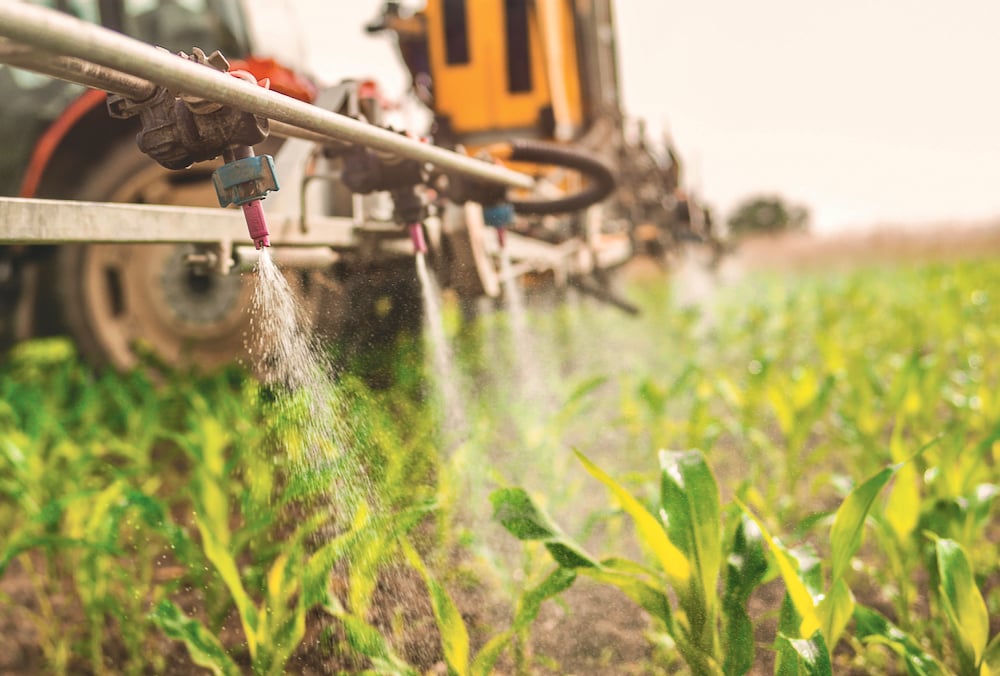Originally published on June 2, 2024, on Alberta Farm Express
By Miranda Leybourne
Glacier FarmMedia – Water cleanliness should be a top priority for producers when considering water quality for spray operations, according to Manitoba provincial weeds specialist Kim Brown.
Water contaminants can tie up active ingredients in herbicides, rendering them ineffective.
“If you’ve got dirty water, (substances in there) will actually antagonize or will tie up glyphosate and diquat and they will not work at all,” she said.
Glyphosate and diquat can also be weakened if bound to soil particles from dusty leaves.
Dirty water on the farm must be filtered, Brown said. She suggested a test for water cleanliness by filling a five-gallon pail. The bottom of the pail should be visible.
Mud and organic matter are also only part of the picture. There are also chemical issues to deal with, like concentrations of mineral ions and salts.
Water qualities such as hardness, presence of bicarbonates, iron and manganese all play a role in herbicide efficacy. The latter two are a particular note in irrigation, because oxidation can lead to formation of precipitates that can plug screens and nozzles.
“This is something that cannot be corrected with additives. This is something where, if you do have high iron and high manganese source(s) in water, then you need to try to find an alternative water source for spraying,” Brown said.
In water test results, total dissolved solids represents all the calcium, magnesium, sodium, sulphate, chloride and bicarbonate found in water. The first three are cations, which have a positive charge. The latter three are anions with a negative charge.
“These are basically the problem ions that cause issues when we’re spraying,” Brown said.
Water tests also show pH levels. There’s little information on how extreme pH levels affect herbicides, Brown noted, but readings of six to eight generally indicate good water. Too far outside that range, and producers should look elsewhere to fill their tanks.
Salinity is sometimes included on water tests. It can serve as a substitute for a total dissolved solids reading and is easier and cheaper to measure at a lab, Brown said. If the electrical conductivity numbers used to measure salinity are less than 500 in the test results, there likely won’t be enough to negatively affect on pesticides.
Challenges with hard water boil down to high levels of calcium and magnesium. Most water tests report this in terms of calcium carbonate (CACO3) equivalent. Ions such as iron, potassium and nitrate could also be present, but are less significant.
“They do have a contribution to water hardness, but the big players are calcium and magnesium,” Brown said.
Weak acid herbicides like glyphosate and amine formulations of 2,4-D are among chemistries in the crosshairs when water is too hard. Water hardness above 250-230 parts per million (ppm) CACO3 equivalent should be treated.
Bicarbonates are usually associated with high sodium in water. They’re a problem for chemistries like 2,4-D amine, tralkoxydim, sethoxydim and clethodim. Water with levels above 500 ppm should be treated.
Data from Saskatchewan Agriculture Water Quality and Herbicides suggests that water hardness must be under 350 ppm CACO3 equivalent if using a low glyphosate rate on annual grass weeds. Between 350 and 700 ppm, water volume should be reduced.
“Basically, you want less of that water and more of the glyphosate in the mix, because that means there’s less of these cations, less of the calcium and magnesium that’s going to tie up the glyphosate,” Brown said.
Increasing the glyphosate concentration has downsides. Good spray coverage is critical for weed control results, especially when glyphosate is mixed with burnoff products.
“A lot of that is (from) water volume, so the only reason you would need to be dropping the water volume back is if you’ve got hard water and you’re not treating it,” Brown said.
If producers have hard water and want to use 2,4-D, she suggested they either find a better-quality water source or use an ester formulation. With the amine formulation, farmers should use the highest recommended rate and possibly a non-ionic surfactant at a rate of one gallon per 1,000 gallons.
To mitigate the effects of hard water, Manitoba’s crop protection guide suggests reducing water volumes in the tank and adding ammonium sulphate at 2.4 litres per acre. If the water is extremely hard, seek another source.

